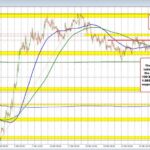USD/CHF Currency Pair: Navigating the Tight Trading Range
Tháng 4 2, 2025
EUR/USD Analysis: Navigating Bullish Hopes and Bearish Risks in April 2025
Tháng 4 2, 2025Understanding “Liberation Day”: Impacts of Tariff Policies on International Trade
In recent discussions surrounding economic strategies, the concept of “Liberation Day” has emerged in relation to tariff policies, particularly within the context of former President Donald Trump’s trade initiatives. This pivotal day, projected to occur around April 2, 2025, is not merely a marker on the calendar but signifies significant implications for international trade and global economic dynamics.
The Concept of “Liberation Day”
Liberation Day denotes a potential turning point within U.S. trade policy. While specific details surrounding this event are scant, the designation indicates a significant shift in the regulatory landscape that could potentially herald a new phase in the United States’ economic relationships with its international partners. This is especially relevant in the context of Trump’s administration, which often adopted an aggressive stance on tariffs as a means to protect American industries.
The implications of this day could extend far beyond America, affecting global supply chains, import/export dynamics, and international economic agreements. If the administration decides to roll back tariffs introduced during Trump’s presidency, it could facilitate a more fluid exchange of goods and services, directly impacting various economies, particularly those heavily reliant on trade with the U.S.
Tariff Policies and Their Global Ramifications
Tariff policies serve as critical tools for regulating international trade. By imposing tariffs, the government can effectively manage the flow of imported goods, incentivize domestic production, and protect local industries from foreign competition. However, such measures often lead to retaliatory tariffs from trading partners, which can escalate into trade wars.
The anticipated “Liberation Day” represents a potential de-escalation of such tensions if tariffs are lifted. This could energize economies that have faced stagnation due to heightened trade barriers. For instance, industries that depend heavily on imported materials may benefit from reduced costs, allowing them to be more competitive both domestically and in international markets. Furthermore, consumers may enjoy lower prices as a result of increased competition and the free movement of goods.
As businesses adapt to these changes, it is essential to monitor how this “Liberation Day” will reshape supply chains. Early indications suggest that companies are already reevaluating their strategies in light of anticipated tariff adjustments. For multinational corporations, a shift in policy could necessitate a reevaluation of their logistics, sources of materials, and even manufacturing locations to optimize for a new trade landscape.
Conclusion: The Future of Trade Relationships
The concept of Liberation Day raises questions and concerns about the future of U.S. tariffs and international trade policies. While it stands to potentially redefine America’s economic relationships, the actual outcomes depend on various factors, including geopolitical shifts, domestic economic conditions, and the responses of international trading partners.
As the date approaches, businesses and policymakers alike must remain vigilant and adaptable, preparing for a possible shift in the global economic paradigm. With all eyes on April 2, 2025, one can only speculate how this day will be remembered—either as a milestone of economic freedom or a complex web of new challenges in the world of trade.
By understanding the nuances of these policies, stakeholders can better navigate the uncertain waters ahead and harness the potential opportunities that liberation from tariffs may bring.

